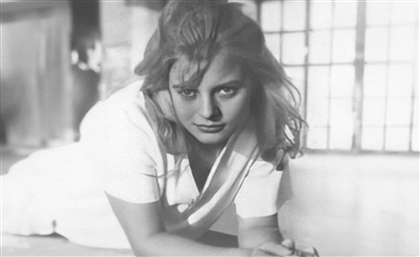Abdel Halim Hafez’s Swan Song: The Story of ‘Qareat El Fengan’
Set to lyrics by Nizar Qabbani and music by Mohammed El Mougy, the song tells the pained story of the journey to love.

Strolling down any Cairo street on a winter evening, or catching a white taxi home from a party chauffeured by an elderly gentleman, one will inevitably be struck by the mournful sway, melancholic words, and sometimes upbeat, and spritely Hawaiian-inspired instrumentals of a certain song of classic Egyptian heartthrob, Abdel Halim Hafez.
‘Qareat El Fengan’ - a poetic, soulful and morose recounting of a young man’s visit to a coffee ground reading fortune teller - touches on the universal story of painful love, loveless lives and the eternal search for belonging in a world and society seemingly doomed to loneliness. A song whose tune has been common to Egyptian ears since the late 1970s, and at first listen, another black-and-white era love ballad beloved by our grandparents, the song’s story is a profoundly deep, political and revolutionary poem by one of the Arab world’s most renowned poets, Nizar Qabbani, set to music by one of Egypt’s finest composers, Mohammed El Mougy. It is also the literal swan song of Abdel Halim Hafez, and a reflection of his life on the brink of the abyss, dying of a painful bilharzia, and doomed to be remembered as the nation’s most beloved male singer, who died in his own arms.
-dddbd81a-a7b3-45c8-8c20-a88b47b95091.png) During Abdel Halim Hafez’s final days, he was sent a poem by Nizar Qabbani from Damascus, which included a written version of his new work. A mournful manuscript, the poem reflects on love - in particular, love of the unattainable sort. “The poem is about human freedom, or about an unattainable woman with no homeland or identity. Both interpretations are true,” Qabbani would say of his poem. Abdel Halim Hafez, beloved by all the young women of Egypt and the Arab world with his striking looks, soft eyes and honeyed voice, had ironically always struggled in his personal and love life. Now, as he was succumbing to the disease that indicated his rural upbringing, bed-ridden with bilharzia, he felt deeply that Qabbani’s poem should be sung by him, as a final sonorous goodbye to his adoring audience.
During Abdel Halim Hafez’s final days, he was sent a poem by Nizar Qabbani from Damascus, which included a written version of his new work. A mournful manuscript, the poem reflects on love - in particular, love of the unattainable sort. “The poem is about human freedom, or about an unattainable woman with no homeland or identity. Both interpretations are true,” Qabbani would say of his poem. Abdel Halim Hafez, beloved by all the young women of Egypt and the Arab world with his striking looks, soft eyes and honeyed voice, had ironically always struggled in his personal and love life. Now, as he was succumbing to the disease that indicated his rural upbringing, bed-ridden with bilharzia, he felt deeply that Qabbani’s poem should be sung by him, as a final sonorous goodbye to his adoring audience.
He immediately commissioned Mohammed El Mougy, one of the leading composers of the day to set the moving words to music. El Mougy incorporated numerous elements of classical Arabic music, using the maqamat and percussion, to convey the mental imagery of being in the presence of a real fortune teller- rattling cowry shells, and magical illusions abounding. Conveying the dramatic prophecy of the fortune teller, El Mougy used different scales to sing the same lyrical verses leading to a crescendo and then, finally, a lull, as the fortune teller assures the young man not to fret, as his love does exist and will be found; it is just the journey to find and maintain her that will be painful.
-f73635dc-36e7-452c-aa44-19820d02724c.png) As the music was finalised, and rehearsals took place with Abdel Halim Hafez bound to his wheelchair, a final alteration had to be made to complete the masterpiece. An alteration in the lyrics. In costly phone calls estimated at thousands of Egyptian pounds, Abdel Halim Hafez and Qabbani negotiated to change certain lines of the poem which might be interpreted as inflammatory to the clergy and the religiously minded. Most notably, a verse that translated to, “My boy, he dies a martyr, he who dies for the religion of his beloved,” was altered to the more socially conventional, “My boy, he dies a martyr, death is worth it for the beloved.”
As the music was finalised, and rehearsals took place with Abdel Halim Hafez bound to his wheelchair, a final alteration had to be made to complete the masterpiece. An alteration in the lyrics. In costly phone calls estimated at thousands of Egyptian pounds, Abdel Halim Hafez and Qabbani negotiated to change certain lines of the poem which might be interpreted as inflammatory to the clergy and the religiously minded. Most notably, a verse that translated to, “My boy, he dies a martyr, he who dies for the religion of his beloved,” was altered to the more socially conventional, “My boy, he dies a martyr, death is worth it for the beloved.”
With the music and lyrics in place, and 18 rehearsals spanning over a year done, the anticipating public was welcomed by news of the song’s first performance. Attended by a large audience, who sat with bated breath, silently observing their idol’s final serenade, the crowd at Cairo’s Tersana Club was moved to tears as Abdel Halim Hafez sang of their collective longing and amorous suffering, and reflected on their beloved crooner, whose public life was all too well known by them. It was spring, and the blooming flowers would have scented the air at this concert in April 1976.
Performing the song numerous times over the next year, one of its most memorable performances took place shortly before Abdel Halim Hafez’s death in March 1977. Gaunt and sallow on stage, yet immersed in his art, Abdel Halim Hafez sang his verses, enunciating each syllable and impassionately voicing his own pain, both bodily and emotionally. In the final instrumental interlude of the piece, normally lasting about a minute, his band gave a parting gift to their maestro. The instrumental was played first, prolonged and accented, by the pianist, before the entire band came in to give it a crescendo, playing the same melody over and over, on all of their instruments, and in different maqamat, prolonging it to around four minutes- a soulful farewell.
Abdel Halim Hafez’s funeral soon thereafter is the stuff of legend - a funeral cortege preceded by state officials paid tribute to this musical legend who had equally become part of the nation’s soul. Along the belle epoque boulevards of Downtown Cairo, his flower-laden coffin was greeted by people from all walks of life leaning off their balconies and lining the sidewalks to pay their final respects. An urban myth holds that over a dozen young adoring women had thrown themselves off balconies that day.
As the poem’s fortune teller assures its young protagonist to worry not about the painful journey to love as in the end he will find the love he seeks, it may be that Abdel Halim Hafez also found the love that had evaded him his entire personal life - the love of crowds of adoring fans who appreciate and cherish his oeuvre so many decades even after his passing.
Related Articles
Trending This Week
SceneNow TV
Events Calendar




















